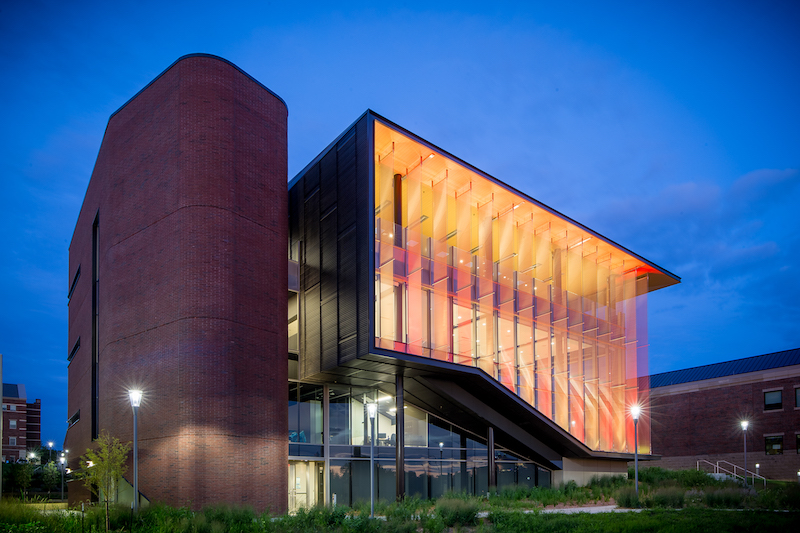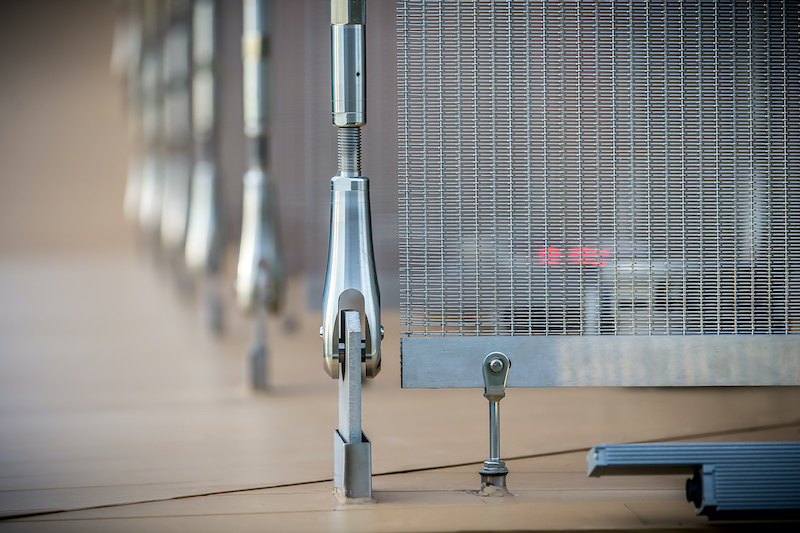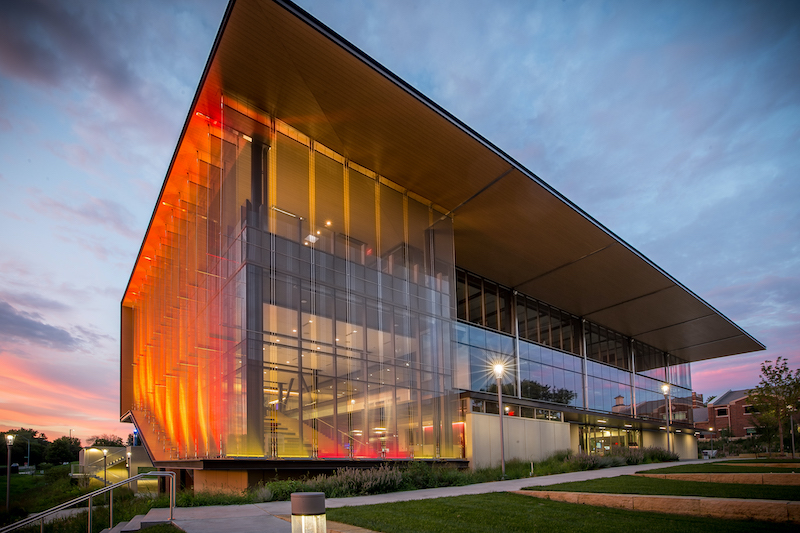The overarching design statement for the Kansas City University Center for Medical Education Innovation aligns with the university’s commitment to reach beyond campus to the greater community, said Ben Bye, Associate, CO Architects. “The construction of the envelope was big. We needed to showcase the educational innovation happening inside the building to the campus and the city beyond.”
The transparent glass façade symbolizes how technologies make classroom walls disappear in this one-of-a-kind virtual learning environment.
Cutting-edge technology facilitates the center’s mission to overcome barriers and expand its reach in medical education into the greater community. For instance, CMEI hosts training for rural communities to cultivate interest in STEM subjects among underserved school children.
Behind the glass façade, the design team envisioned a multilevel lobby space with stadium seating that doubles as a forum for briefings and colloquia. The tiered form of the seating is visible from the exterior, and its third-floor terrace overlooks views of the Kansas City skyline to the west.

GKD OMEGA 1520 METAL FABRIC: SLIM AND SHADY
“Many of the design ideas are about creating transparency and highlighting the next generation of medical education and simulation inside the building,” said Bye. The west side of the building features the best views and connectivity to the community, but it was more difficult to shade. Finding a system that enhanced transparency for the façade became a critical specification factor.
The design team specified GKD Omega 1520 metal fabric for its ability to deliver shading, transparency, and beauty with long-term durability. “With a horizontal pattern at 50% opacity, OMEGA 1520 meets the very particular criteria that comes with a glass façade,” said Andy Franks, Regional Sales Manager for GKD-USA.
The design for the metal mesh involved anchoring the panel at 90 degrees perpendicular to the façade, similar to how vertical blinds function. “It’s exactly how you want to orient the product to get its full sun-shading benefit,” said Franks.
HEALTHY ATTACHMENT STYLE
Code requires that metal mesh suspended from a façade be anchored to the structure at every floor level, which wasn't possible considering the entirely glass façade.
“We can’t just grab that panel at top and bottom and still satisfy building codes," said Bye. "We had to come up with a method that allowed the product to be used without attaching it at the midsections.”
The design team found a way to work within these design constraints, which also included strict wind load resistance and LEED certification standards.
Working with CO Architects, Helix Architecture + Design and the structural engineer, GKD devised a unique attachment system using ultra-thin cable rail as an extension of the foundation and cantilevered roof.

Cable running from the bottom slab to the roof soffit serves as the attachment point to complete the 42-foot vertical span of mesh.
The southern exposure features the same hardware and attachment system that is used on the west side for a uniform appearance. It was also the most economical solution.
GATEWAY TO THE WEST
With a handsome horizontal pattern, OMEGA 1520 complements the lines and patterns found on the metal siding and brick elements, while providing high performance benefits.
“It’s incredible how transparent the mesh is when you’re on the forum or the terrace," said Bye. "You can see right out with hardly any obstruction. But at the same time you can see how its working to shade the building."
The dynamic material changes appearance throughout the course of the day. “When it's bright outside it looks more solid, and when the sun sets and the lights come up in the building, it becomes like a thin veil,” said Bye.
The project serves as the new gateway to the campus from the community. It symbolizes the university’s commitment to improving the collective well-being of the surrounding community.
Color-changing LED lights on the foundation illuminate the metal mesh after dark, adding flourish to the building’s conversation with the surrounding area. The school can display its colors, laud a local sports team, or celebrate holidays with exterior lighting.
“The metal mesh grabs the light and the building becomes a beacon in dialog with the city through color, tying back to the goals the university had for this building on their campus,” said Bye.






